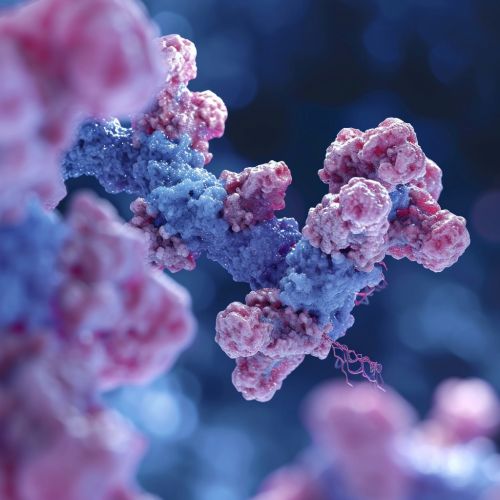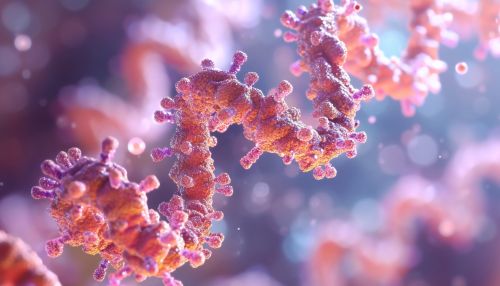Class I cytokine receptor
Overview
The Class I cytokine receptor is a class of proteins that are known to be receptors for cytokines of class I and class II. These proteins are a large family of receptors that are activated by a subset of cytokine proteins, which are involved in cell signaling processes. The Class I cytokine receptor family is characterized by their specific structure and function, which is to bind to cytokines and initiate a signal transduction pathway within the cell. This family of receptors includes several subfamilies, such as the Interleukin-2 receptor subfamily, the Interleukin-3 receptor subfamily, and the Interleukin-6 receptor subfamily, among others.


Structure
Class I cytokine receptors have a specific structure that allows them to bind to cytokines and initiate a signal transduction pathway. These receptors are typically composed of several subunits, which can be either identical or different. The extracellular part of these receptors is characterized by the presence of two fibronectin type-III domains, which are involved in protein-protein interactions. The intracellular part of the receptor, on the other hand, does not have any enzymatic activity, which distinguishes it from other types of receptors. Instead, the intracellular part of the Class I cytokine receptor is associated with one or more Janus kinases, which are activated upon cytokine binding and are responsible for the initiation of the signal transduction pathway.
Function
The primary function of the Class I cytokine receptor is to bind to cytokines and initiate a signal transduction pathway within the cell. This is achieved through the association of the intracellular part of the receptor with Janus kinases. Upon cytokine binding, these kinases are activated and subsequently phosphorylate the receptor, creating a docking site for signaling proteins. These proteins, in turn, activate various signaling pathways within the cell, leading to a variety of cellular responses, such as cell proliferation, cell differentiation, cell migration, and cell survival.
Subfamilies
The Class I cytokine receptor family includes several subfamilies, which are classified based on their structure and the specific cytokines they bind to. These subfamilies include the Interleukin-2 receptor subfamily, the Interleukin-3 receptor subfamily, the Interleukin-6 receptor subfamily, and others. Each of these subfamilies includes several members, each of which binds to a specific cytokine and initiates a specific signal transduction pathway.
Clinical significance
Due to their role in cell signaling processes, Class I cytokine receptors are involved in a variety of physiological processes, such as immune response, hematopoiesis, and inflammation. Consequently, alterations in the function of these receptors can lead to a variety of diseases, such as immune disorders, hematological disorders, and inflammatory diseases. For this reason, Class I cytokine receptors are considered potential targets for therapeutic intervention in these diseases.
